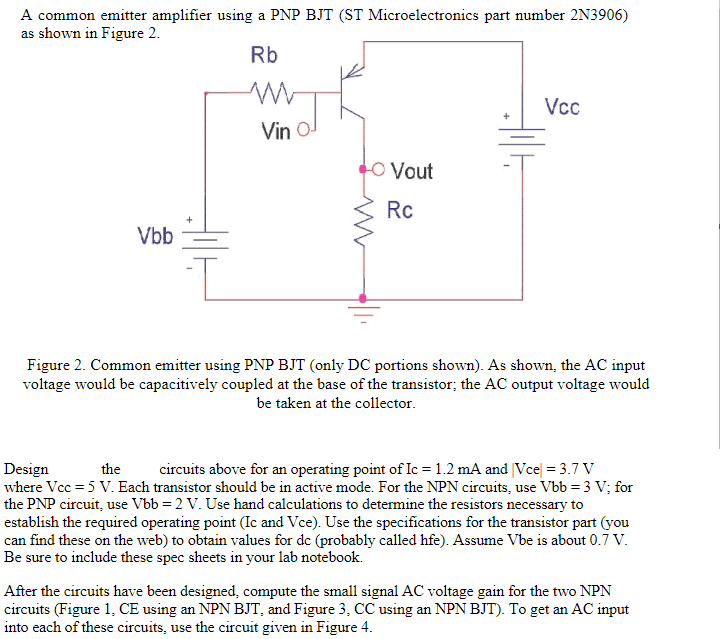
- #BJT TRANSISTOR CALCULATIONS HOW TO#
- #BJT TRANSISTOR CALCULATIONS SERIES#
- #BJT TRANSISTOR CALCULATIONS FREE#
The closest commercial value for this resistor is 6,8KΩ, so this will be the resistor base Rb. How big should be resistor Rb to allow just 0,66mA to flow? Bear in mind that you have to consider the 0,7V voltage drop across the diode (from base to emitter). In order to secure a good switching mode of the transistor. The gain HFE between the Ic and Ib are required to calculate the resistor in the base Rb. ( The mode selector will vary from multimeter to multimeter).Īfter measuring it, we will use 150 as the value of HFE for the calculation. If it's the 2n3906, then in the PNP socket and select the ‘PNP' mode. If it's the 2n3904, then insert in the NPN socket and select the ‘NPN' mode. Connect the transistor to the collector, emitter and base sockets of the HFE measurement. A few results under certain conditions can be found on the datasheet.īut let's use the HFE measurement tool from the multimeter to find out an approximately value. It varies on conditions such as temperature, collector current, etc. How much gain does the transistor has? It depends. The current Ic is proportionately dependent on the value of Ib it's translated to the following formula: Ic = Ib * HFE

The more current that flows through Ib, the more current will flow through Ic, theoretically. The ratio between the collector current ‘ Ic‘ and the base current ‘ Ib‘ is called HFE gain (sometimes called β). The Collector Current − Continuous is 200mA, which is more than enough current to switch the LED (20mA). Since the maximum voltage is going to be 12V, the circuit doesn't reach any of the maximums of Collector−Emitter Voltage or Collector−Base Voltage. The switch works the same as the NPN transistor.
#BJT TRANSISTOR CALCULATIONS SERIES#
The solution is to deploy a NPN transistor in series with the base of the PNP, as shown below.
#BJT TRANSISTOR CALCULATIONS HOW TO#
How to Drive the DC Motor with the PNP Schematic

Then, the transistor is switched on and the motor begins to rotate. When the switch is turned on, (enough) current flows from the 5V power source from the base to the emitter. How to Drive the DC Motor with the NPN Schematic The emitter (for this switching model schematic) should be connected either to the ground (NPN) nor to the power source (PNP).ĭepending on the quantity of the base current, regulated by the base resistor Rb, the collector will allow a proportional amount of current to flow from the collector to the emitter (NPN) or vice versa (PNP). In both cases, the collector is connected to the circuit that we actually want to switch, where more current flows. The NPN is switched on when (enough) current is flowing into the base of the transistor, while the PNP is switched on when (enough) current is drawn from its base. The schematic is very similar except that for this circuit two power sources are used. In the previous post, we used a transistor to switch a LED. The Circuit to drive a DC Motor Switching Schematic of the Transistor Final ValuesĪfter the tests, here are the results that we have interest in.
#BJT TRANSISTOR CALCULATIONS FREE#
For the calculation, let's leave it at 20mA as midpoint but feel free to use any value between both measures. As you can see, the measures varies from 19.1mA to 159.9mA.


 0 kommentar(er)
0 kommentar(er)
